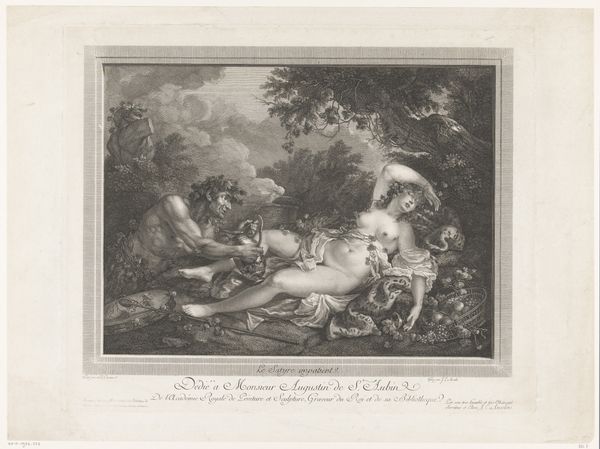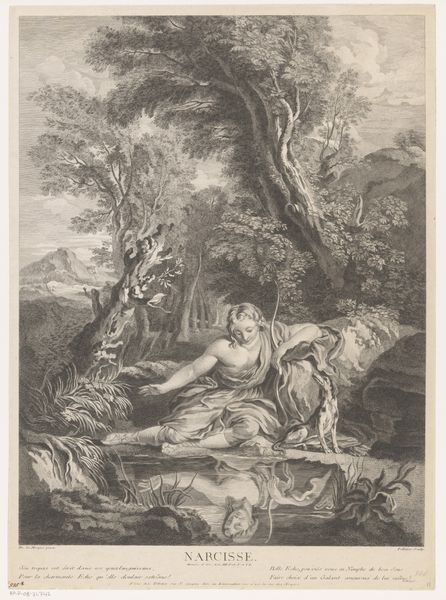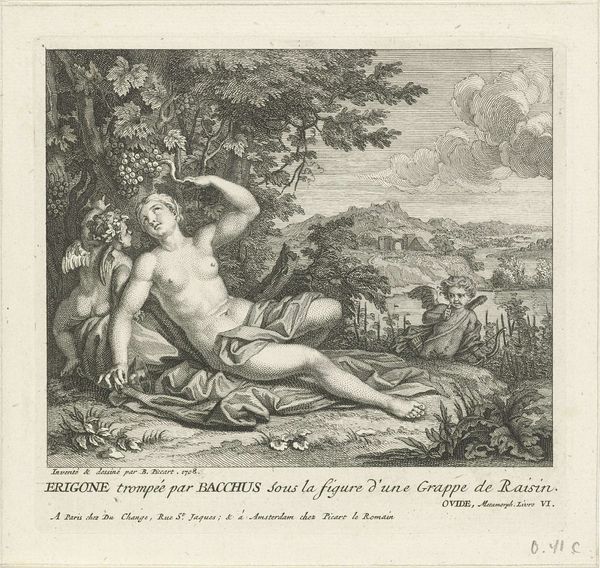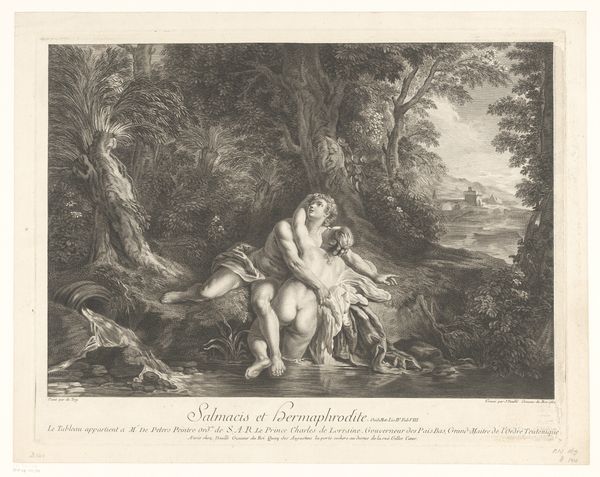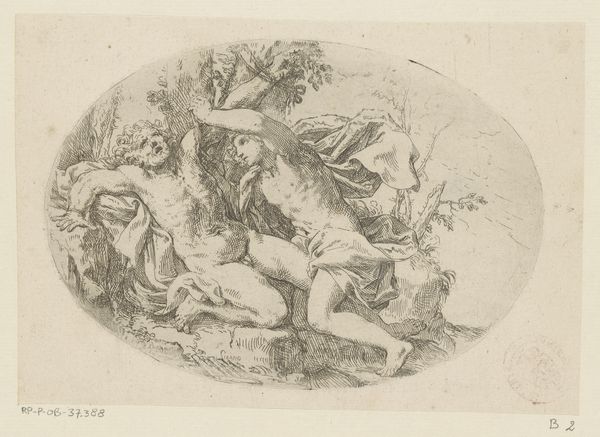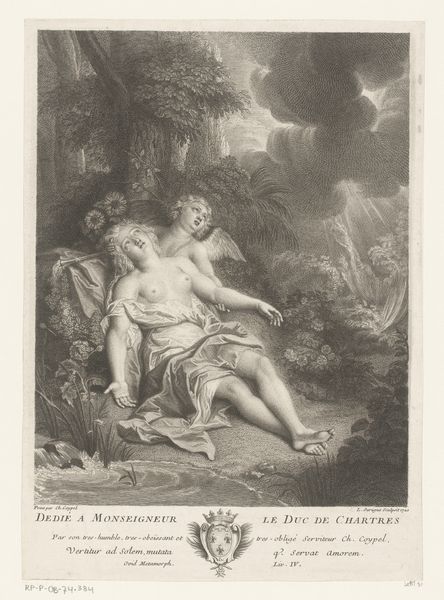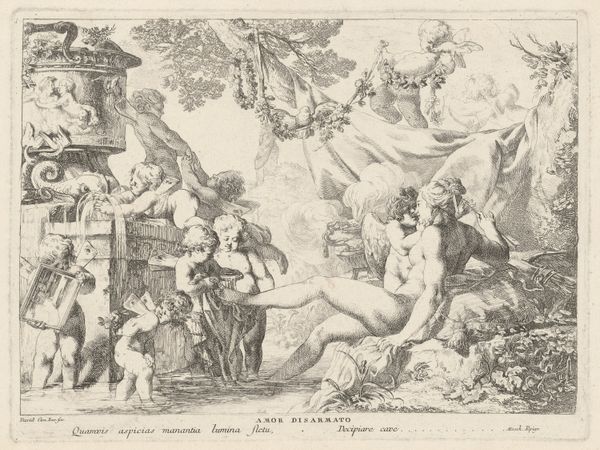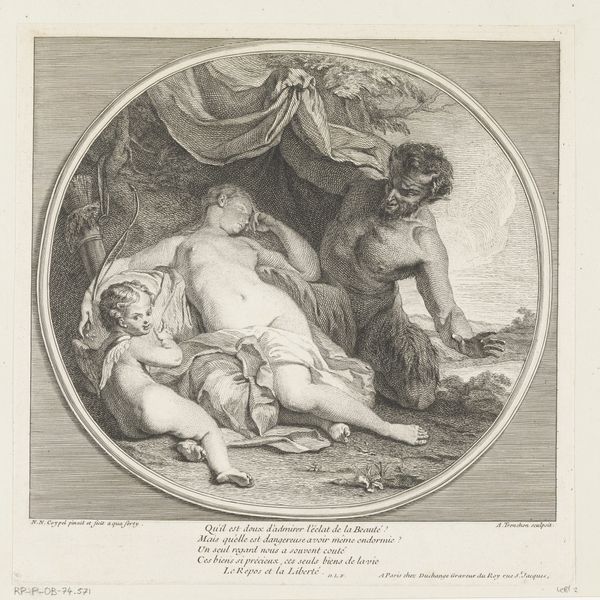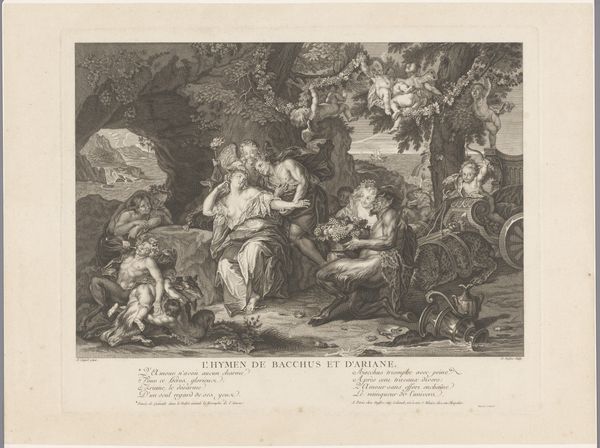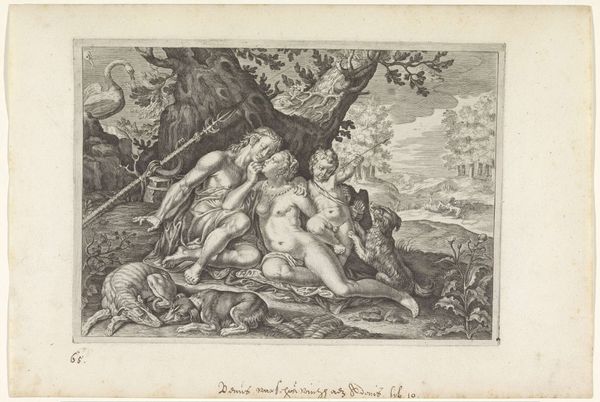
Dimensions: height 392 mm, width 481 mm
Copyright: Rijks Museum: Open Domain
Curator: Welcome, everyone. Today, we’re looking at an engraving entitled “Jupiter en Callisto” by René Gaillard, created before 1777. Editor: My immediate impression is one of idyllic leisure and soft sensuality. The composition guides the eye effortlessly around the reclining figures amidst lush nature. There is this sense of privacy almost as if peeking into an intimate moment. Curator: Right, there's definitely a narrative here. Gaillard portrays the story of Jupiter, disguised, seducing the nymph Callisto. Note how the engraver used sharp contrasts of light and dark to model forms and suggest volume, a technique common in Baroque prints, achieved here through hatching and cross-hatching. Look at the various ways the different tones of shading evoke silk versus skin, stone versus foliage. Editor: And the artist strategically places putti, these cupid-like figures, around the lovers – each seemingly with its own gesture of witness or mischievous involvement. What significance do they bear, particularly those at the back partially concealed among the drapery and the figure looming as a stone mountain beyond. Do you see them as an expression of a certain psychological state associated with desire and secrecy? Curator: I think those cherubic figures indicate, visually at least, a knowing or complicit social dimension of love that the piece presents in a wider cultural and social narrative. It reflects Baroque values concerning wealth and pleasure and illustrates that high social standing went hand-in-hand with high romance. The materials used in creating the print are of relatively low intrinsic value, yet their transformation through skilled craftsmanship lends an undeniable prestige, reflected in the image's content as well. Editor: It’s so interesting how symbols transform across time and context. Even those cherubic figures that might symbolize purity today in this context represent the sly mischief associated with love as performance and pleasure. The surrounding natural landscape functions more like a backdrop on a stage. What endures here for me is not merely narrative, but also, the engraving’s emotional pull and psychological depth, rendered via iconic imagery and its visual rhetoric around hidden elements that both suggest and provoke the narrative in their visual presentation. Curator: Precisely! Considering these different perspectives gives us a fuller appreciation, doesn’t it? Editor: Indeed, recognizing that interplay is where true appreciation begins.
Comments
No comments
Be the first to comment and join the conversation on the ultimate creative platform.

